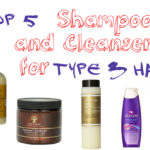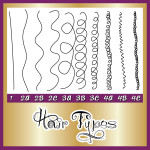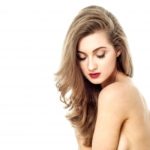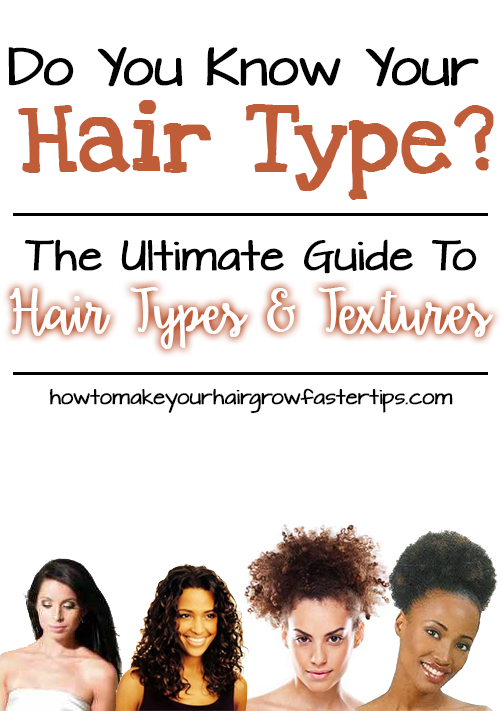
Hello Lovelies!
I’m sure it’s easily apparent, but human hair has different types and comes in all sorts of textures and patterns. Hair type refers to the amount of curl and thickness in the individual hair strand for a single head of hair. Hair types range from categories 1 to 4, and within each category, the amount of curl to the individual hair strands is notated with a letter ranging from a to c.
Finding your hair type may be fairly easy or a bit more challenging. The reason being is because some people can have different types of hair on their head at one time. As a result, there have been some controversies regarding hair type and even questions as to whether hair typing is important. I say it is important. Although hair typing can be confusing, knowing your hair type can help you determine what is naturally healthy for your hair, the practices that will help your hair thrive, and the practices that may harm your hair‘s health.
Type 1 Hair

Type one hair is classified as hair that has no curl pattern and is naturally straight. Type one hair tends to be shiny and oily due to the hair strand’s lack of curl. Since the hair strand is completely straight, natural oils that come from the scalp can reach all the way down the hair shaft. Within the Type 1 category, there are Type 1a, Type 1b and Type 1c hair categories.
Type 1a hair is completely flat and has little to no body. It is officially known as the hair type that will not hold a curl. The hair is just completely straight from the root to the tip. Many Asian women fall into this category, but otherwise, this hair type is very rare. In fact, it’s so rare, Jennifer Aniston is not a type 1a, I just used a picture of her with bone straight hair to demonstrate what type 1a hair looks like.
Type 1b hair has more body than type one hair and is not completely flat. Most straight haired women fall into the type 1b category. Type 1b hair is most distinguishable from type 1a hair because it will hold a curl. Type 1b hair has sporadic bends here and there, and the ends of the hair tend to curl under slightly, unlike type 1a hair where the ends are completely straight.
Type 1c hair is generally straight, has body, and a few areas of not so much waves but slight bends. Type 1c hair has that perfectly tousled look when it dries on its own. This look is natural and achieved without the use of heat tools. The individual strands tend to be thick and coarse.
Type 2 Hair

Type 2 hair is classified as hair that is naturally wavy and forms an “S” shape. Type 2 hair is not as oily as type 1 hair due to the texture pattern of the individual hair strand, but type 2 hair isn’t dry either.Within the Type 2 category, there are Type 2a, Type 2b and Type 2c hair categories.
Type 2a hair has several loose, natural, beachy waves all over the head, unlike Type 1c hair that features a few slight bends. Type 2a hair isn’t as frizzy as the other two type 2 hair categories, so it can easily be weighed down when you apply too much product.
Type 2b hair features waves that are clearly defined and more tightly drawn, but the hair still sticks closely to the head and doesn’t poof or bounce up. Type 2b hair is when the frizz starts to kick in. Many ladies who fall into this category have to use gel based products to keep the frizz away.
Type 2c hair consists of waves that are tightly drawn, so much so that they start to whirl around itself and form loose spiral curls. Type 2c hair is the frizziest of all the type 2 categories and the hair bounces up slightly and poofs away from the face.
Type 3 Hair

Type three hair is classified as hair that is naturally curly and shaped like an “S.” Type three hair forms ringlets that are naturally defined without the use of manipulation or hair-styling products. Type 3 hair tends to be dry due to the hair’s texture. The natural oils found in the scalp aren’t heavy enough to reach past all of the curves and bends along the S shape of the hair strand, so unlike Type 1 and in some instances Type 2 hair, these natural oils don’t reach the ends of Type 3 hair. Within the Type 3 category, there are Type 3a, Type 3b and Type 3c hair types.
Type 3a hair features loose Shirley temple curls that are often silky in texture. The curls are easily defined on their own without the use of much product or manual manipulation.
Type 3b hair consists of curls that are more spiraled and springy than type 3a curls. Many half-Black women fall into this category. The hair is still moderately defined on it’s own, but it’s extremely frizzy without the use of styling aids, such as gel and hair creams.
Type 3c curls are more tightly drawn and coily than Type 3b curls, and are often highly textured. The individual hair strands are closely packed together, this is also known as clumping. It takes a bit of manual manipulation to get the curls evenly defined, but they’re still moderately defined on their own, but not as smooth as 3b curls.
Type 4 Hair

Type 4 hair is classified as hair that is coily and tightly curled without the defined and discernible ringlets formed by Type 3 hair. Another main difference between Type 4 hair and Type 3 hair is that Type 4 hair typically keeps the same shape whether it is wet or dry, where as Type 3 hair can be completely straight or wavy when wet. Type 4 hair tends to be extremely dry due to the shape of the individual hair strand. The natural oils produced by the scalp tend to get no further than a inch or two down the hair shaft due to the highly textured pattern of the hair. Within the Type 4 category, there are Type 4a, Type 4b and Type 4c hair types.
Type 4 a hair is coily and forms tight, perfectly cylindrical curls. These curls tend to be about the width of a pencil and quite springy in nature. Unlike the other category 4 hair types, 4a hair falls down, and 4a hair has a clearly defined curl pattern.
Type 4 b hair takes on a tight, crimpy pattern, more so than cylindrical curls. Distinguishing between Type 4b hair and Type 4c hair can be quite confusing, but just remember that Type 4b hair is still clearly defined. The roots of 4b hair may not be as defined, but the ends of 4b hair have a clear curl pattern.
Type 4c hair consists of a “Z” shaped , zigzag pattern and tends to show little to no defined sections of hair. The texture of the individual hair strand ranges greatly, from thin/fine to wiry and coarse. 4c hair is known to shrink by more than half of it’s length, which I think is pretty amazing!
Relaxed Hair
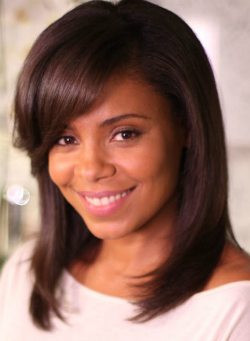
Relaxed hair deserves its own hair type because relaxing the hair changes the natural curl pattern of the hair. The curl pattern of relaxed hair ranges anywhere from Type 1 to Type 3 hair when dry in regards to texture; meaning relaxed hair can still be curly, the curl pattern is just looser than the original texture. However, the hair will not take on the oilier nature of Type 1 hair and will still reflect the drier nature of curlier hair types.
How to determine your hair type
Hair type is best determined when your hair is squeaky clean and completely free of hair products. To do this you need to wash your hair with a gentle clarifying shampoo. After washing your hair, allow it to naturally air dry because drying your hair with a blow dryer temporarily changes it’s curl pattern. Also, don’t dry your hair with a towel because doing so could make certain hair types frizzy and make determining your true hair type even harder.
When the hair has air dried, take a look at multiple sections of your hair and determine your hair type based on the above descriptions and pictures. Keep in mind that you may have more than one hair type. For instance, it is not uncommon for some African American women to have a majority 3b hair type with sections of 4a type hair.
If you’re confused about your hair type, upload join our forum and upload a photo of your clean, air-dried hair and one of our members will be more than happy to help you out!
